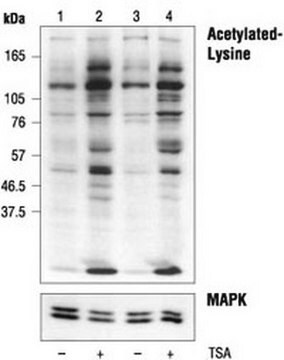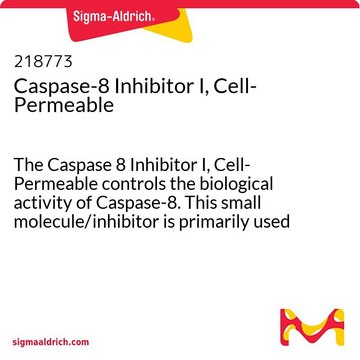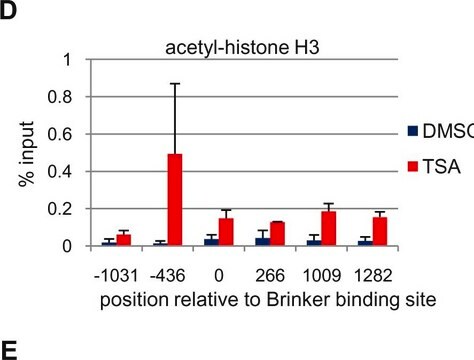05-515
Przeciwciało przeciwko acetylo-lizynie, klon 4G12
clone 4G12, Upstate®, from mouse
About This Item
Polecane produkty
pochodzenie biologiczne
mouse
Poziom jakości
forma przeciwciała
purified immunoglobulin
rodzaj przeciwciała
primary antibodies
klon
4G12, monoclonal
reaktywność gatunkowa
human, mouse, rat, vertebrates
producent / nazwa handlowa
Upstate®
metody
immunoprecipitation (IP): suitable
western blot: suitable
izotyp
IgG
Warunki transportu
dry ice
docelowa modyfikacja potranslacyjna
unmodified
Opis ogólny
Specyficzność
Immunogen
Zastosowanie
5 μg poprzedniej partii immunoprecypitowanego in vitro acetylowanego PCAF dodano do lizatu komórek 3T3 RIPA. Immunoprecypitowany PCAF wykryto w późniejszej analizie western blot przy użyciu 1 μg/ml monoklonalnego anty-GST (nr katalogowy 05-311).
Jakość
Western Blot Analysis:
1:500 dilution of this lot detected ACETYL-LYSINE on 10 μg of sodium butyrated treated HeLa lysates.
Opis wartości docelowych
Postać fizyczna
Przechowywanie i stabilność
Inne uwagi
Informacje prawne
Nie możesz znaleźć właściwego produktu?
Wypróbuj nasz Narzędzie selektora produktów.
Kod klasy składowania
10 - Combustible liquids
Klasa zagrożenia wodnego (WGK)
WGK 1
Certyfikaty analizy (CoA)
Poszukaj Certyfikaty analizy (CoA), wpisując numer partii/serii produktów. Numery serii i partii można znaleźć na etykiecie produktu po słowach „seria” lub „partia”.
Masz już ten produkt?
Dokumenty związane z niedawno zakupionymi produktami zostały zamieszczone w Bibliotece dokumentów.
Nasz zespół naukowców ma doświadczenie we wszystkich obszarach badań, w tym w naukach przyrodniczych, materiałoznawstwie, syntezie chemicznej, chromatografii, analityce i wielu innych dziedzinach.
Skontaktuj się z zespołem ds. pomocy technicznej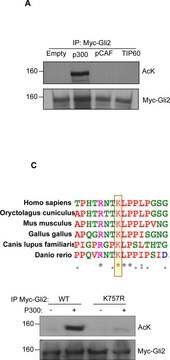

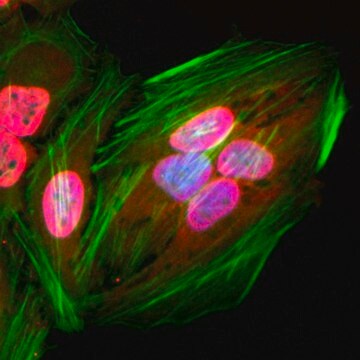
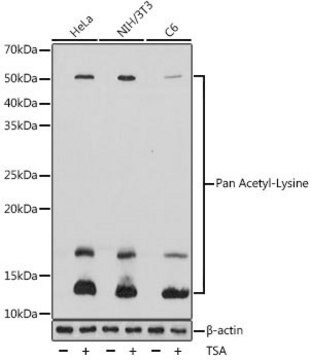
![[β-Mercapto-β,β-cyclopentamethylenepropionyl1, O-me-Tyr2, Arg8]-Vasopressin ≥97% (HPLC)](/deepweb/assets/sigmaaldrich/product/structures/171/970/51ec0a9f-bbad-4de6-8379-01abbe367b05/640/51ec0a9f-bbad-4de6-8379-01abbe367b05.png)
